Learn about Common Veterans' Health Issues

Many issues are common in the veteran population in the United States. They are sometimes considered a culture, a subculture, or a population in general. Their core values, customs, traditions, and philosophy shape how they see and interact with the world around them. People in the military have standards of conduct and discipline with required behavior and actions. Ideals like teamwork, loyalty, selfless service, rank, identity, hierarchy, ceremony, etiquette, cohesion, order and procedure, codes of conduct, implicit communication patterns, and obedience to orders are simply part of their life.
Their service puts them at risk of various injuries. A combat injury can occur during a fight, while physical damage can result from stress on the body. There are times when the injuries are severe enough to cause disability or even death. Some may not be as serious, but they can still be painful and interfere with daily life.
Physical injuries in veterans
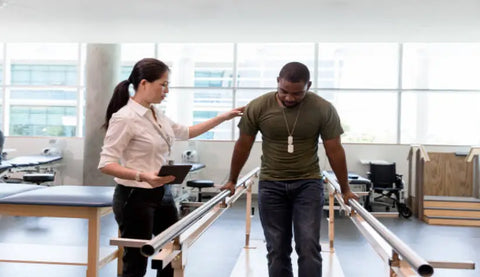
There are several types of physical injuries, including:
- Shrapnel and gunshot wounds
- Loss of limbs
- Head and brain injuries
- Tinnitus and hearing loss, typically due to noise exposure
- Sprains and contusions
- Limited range of motion, especially ankles and knees
BM71 is helpful for Tinnitus (ringing in the ear), damage to the vestibulocochlear nerve, and sensations of ringing, buzzing, hissing, chirping, whistling, or other sounds.
Health problems range from environmental hazards such as contaminated water, chemicals, infectious diseases, and burn pits that may also be at risk.
Mental issues
Instant Calm Formula provides effective natural support for anxiety, frustration, sleeplessness, and stress. It may promote calm, comfort, and focus.
Common injuries among veterans include musculoskeletal injuries and chronic pain, several mental health problems such as post-traumatic stress disorder (PTSD), moral damage, traumatic brain injury, and chemical exposure injuries. These include exposure to substances and noise and concerns about infectious diseases. A GP should research military service and be knowledgeable about a veteran's various health issues, especially her PTSD, depression, and suicidal tendencies.
Being away from your family during war or combat can be very stressful. Stress can put military personnel and veterans at risk for serious mental health problems. These include but are not limited to: anxiety, post-traumatic stress disorder (PTSD), depression, and substance use. Suicide is also frequent.
According to veterans' medical records, "1 in 3 veterans are diagnosed with at least one mental disorder, and 41% are diagnosed with a mental disorder or behavioral adjustment disorder."
Thus, mental illness identification and treatment have the most significant potential to reduce the risk of suicide. Unfortunately, reluctance to seek help and therapy complicates this population's diagnosis and treatment of mental illness.
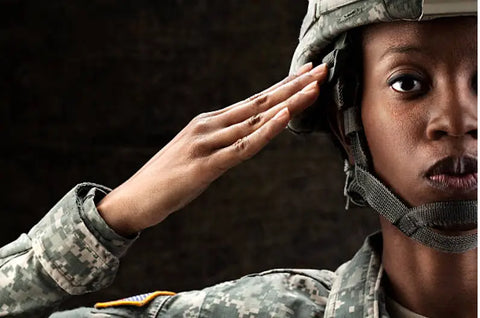
SUD & PTSD
Military service significantly increases the risk of veterans having issues with alcohol, tobacco, various drugs, or a combination. Veterans smoke and consume more alcohol than non-military personnel. Long-term care is required. Several clinical guidelines have therefore been appointed to develop evidence-based screening tools to help doctors identify a veteran with SUD and improve their outcomes. Although this issue is not unique only to veterans, one military official said he had PTSD almost four times. PTSD is a range fusion of symptoms that vary in severity and duration. Diagnoses say it contains intrusive images (flashbacks), memory avoidance (isolation), negative thoughts and feelings over themselves, and reaction to situation symptoms (startle responses).
TBI
TBI is trauma-induced structural damage and/or physiological impairment of brain function due to external forces. TBI is defined as mild to moderate, depending on the duration of unconsciousness and memory loss. It can be categorized as degree or severity. Disorientation and the ability to react to people after the event (i.e., can they follow commands). Mild traumatic brain injury (or concussion) is most common but difficult to diagnose as symptoms include "headache, dizziness/difficulty walking, fatigue, irritability, memory problems, and attention problems."
Depression
Depression is one most common mental health disorders, according to data available from the National Alliance on Mental Illness (NAMI)2. The diagnosis rate for depression among veterans is 14% (even though NAMI believes depression is underdiagnosed). Notably, NAMI2 found that an individual with PTSD was less likely to commit suicide than an individual with depression, possibly due to increased awareness and acceptance of his PTSD. Despite its horrible effects, significant & major depression is a treatable mental health disease with an 80-90% success rate with medication, psychotherapy, and/or electroconvulsive therapy, which needs to be managed effectively.
BM118 may help your body to deal with low mood, sad mood, loss of interest, lack of pleasure in previously enjoyable activities, significant change in appetite, sleep disturbance, etc.
Suicide
Risk assessment and intervention are paramount, with 18 to 22 veterans committing suicide daily. Risk factors are significant regardless of age. Young veterans aged 18 to 44 are at the highest risk of suicide. However, it was found that even veterans over 50 had nearly twice the suicide rate of non-veterans (69% and 37%, respectively). Evidence also supported the healthcare system's effectiveness in reducing suicide assistance. Therefore, a mental health facility referral for appropriate counseling and health services is recommended.
Hazardous exposure
Veterans' harmful exposure to chemicals (Agent Orange, Contaminated Water), Radiation (Nuclear Weapons, X-Rays), Air Pollutants (Fuel Pit Smoke, Dust), Workplace Hazards (Asbestos, Lead), War Agents (Chemicals and biological weapons) increase the risk of health problems even years after the initial exposure to the pollutant. There are insufficient data to determine the health effects of long-term exposure to dangerous contaminants such as "burn pits" and infectious agents such as rabies. Diagnosis and appropriate treatment are critical.
Homelessness issues
About 49,933 veterans are estimated to be homeless (about 12% of the homeless adult population). However, they suffer from the added burden of military-related factors such as PTSD, traumatic brain injury, and military teachings that may not be transferable to civilian work settings. The National Coalition for 13 states that 51% of homeless veterans have a disability, 50% have a severe mental illness, and 70% have SUD. The National Coalition for Homeless Veterans considers housing and employment opportunities for homeless veterans a top priority.

Moral harm
Veterans may suffer moral harm unrelated to or concomitant with PTSD. Although not a DSM-5 diagnosis, moral damage is defined as symptoms resulting from taking, preventing, witnessing, or learning to act contrary to deeply held moral beliefs and expectations. 24 Acceptance and attachment therapy, a mindfulness-based therapy, can treat moral wounds by focusing on personal values and behaviors consistent with those values. 25 Military-related PTSD and moral injuries are treated for these conditions.
Sexual military trauma
Sexual military trauma refers to sexual assault or harassment during military service. Military sexual trauma is high among veterans, with a median prevalence of 3.9% for male and 38.4% for female veterans. Data suggest that most people do not report military sexual trauma. Health effects include poor mental health, chronic health problems, substance abuse, high morbidity and mortality, and significant economic impact. Have you ever had an unwanted sexual experience in the military, including threats or repeated sexual attention, comments, or touching? Have you ever had sexual contact against your will, been forced, slept in, or been intoxicated? Each VA facility has a military sexual trauma-related affairs coordinator, and the veteran has access to appropriate medical care, even if he is not eligible for VA health care. Can receive care.
Current status
There are currently approximately 22 million veterans in the United States. By providing capacity building in veteran-specific health issues and integrating veteran content into our curriculum, we can improve veteran outcomes and deliver superior care to those who have served our country.
The total number of veterans with access to the VA health care system (8.9 million in 2013)16 is less than half the current total. Additionally, as of October 2001, approximately 61% of all quarantined OEF/OIF veterans had access to veterans' care. Ensure superior veteran care and outcomes.
Kali Phos may help with nervous conditions and exhaustion. Effective natural therapy during exams or times of work-related stress. This remedy is known as an excellent antiseptic and is also useful with offensive secretions and excretions.
A new approach to help treat veteran-related issues
We focus on the strengths, needs, and preferences of veterans. At Bestmade, we are very active in finding holistic treatments. This program is developing an entirely new way of healing, dedicated to organic natural remedies, yoga-based wellness, and massage, allowing veterans to be involved in all aspects of their care. It's these little recreational remedies that do help.

Assessing health care needs of veteran students:
To meet the medical needs of veteran students, you should have the following components:
- Improve access to mental health services within the USA.
- Add groups and specifically targeted programs that focus on issues such as addiction, PTSD, and building skills and tools to adapt to military life.
- Launch prevention and intervention marketing and social media campaigns to address suicidal ideation and recognize the signs and where to go.
- Develop a peer-to-peer mentoring program, including a buddy system for veterans entering college.
- Weekly and monthly follow-ups to ensure needs are met and questions answered.
Overall initiatives and programs
The success rate of giving medicine to soldiers, sending veterans home with bottles of pills, and several therapy sessions to 'cure' PTSD The mediocrity has forced the military, Veterans Affairs, and other agencies to rethink these strategies. There are no quick answers and no easy cures. Many people believe that PTSD can be alleviated but not cured. To be compelling and profound, healing must be gradual and the therapeutic process positive, empathetic, and uplifting. This takes time. There will be setbacks. Requires a vital emotional component. Like-minded people who have experienced trauma must provide help when needed, know when to back down when anger strikes, and guide them until their anger strikes—underlying grief and finally reaching healing. Active duty soldiers with PTSD need tools to emotionally regroup, relax, and effectively deal with high-stress levels.
Holistic and Wellness Practitioners who use techniques such as yoga, meditation, healing touch, craniosacral therapy, natural remedies, healthy and clean eating and cleansing, guided spiritual principles, and even music therapy should be aware of these techniques. Suggests that it helps the mind and body and Makes soldiers and veterans happy.
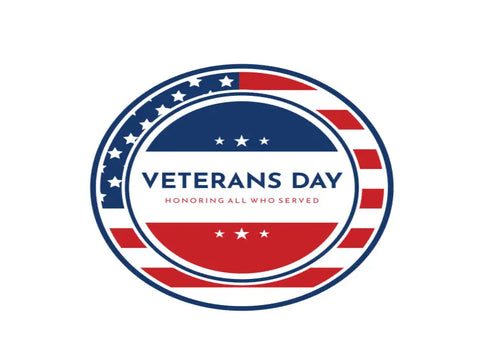
What can we do to help?
We need to raise awareness and sensitivity to veterans and deployed soldiers. We need to support, encourage, pray and hope for all veterans. You can also petition the representatives to ensure that if the program is cut, the last ones to be missed are those who support veterinarians, their families, and those stationed in the Middle East. Families fearing for their safety and welcoming their loved ones home after months of pain do not have to go through suicide or other horrifying events because their loved one's PTSD was not treated.
Their struggle will continue until the day when the war is over, and the armies go home. Please remember them and donate to the Wounded Warrior Project, Project Odyssey, Omega Institute, and Paws of War if you can. These organizations support soldiers and veterans in their ongoing recovery from PTSD. Our culture needs to keep an eye on veterans; this is a perfect time.
The bottom line
In summary, our research found two factors that drive veteran success. The first element is to welcome the veteran and foster a holistic environment where all support facilities, including mental health, welfare resources, and natural health remedies. The second factor is authenticity and building trust. They need to organize their units like they would in an army. And finally, make sure that the people asking you to support our veterans are genuinely interested, want to be there, and serve those who have served.
Sources: NCBI, Medline Plus, AAFP, BVA, The Mobility Resource


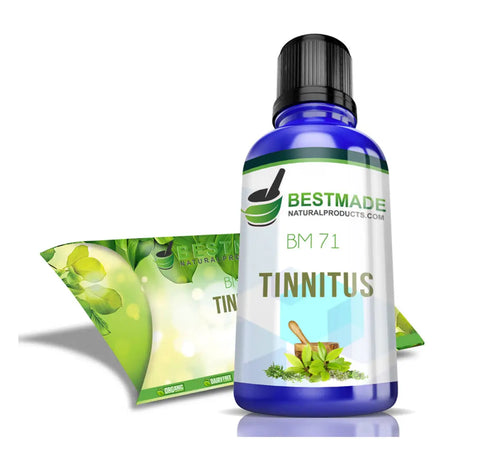
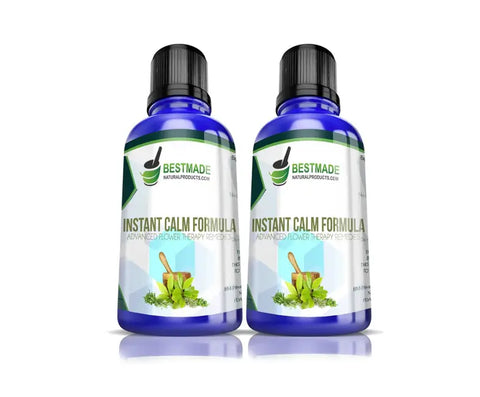


Leave a comment